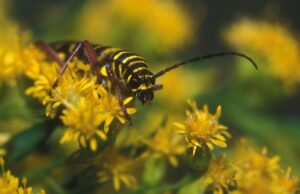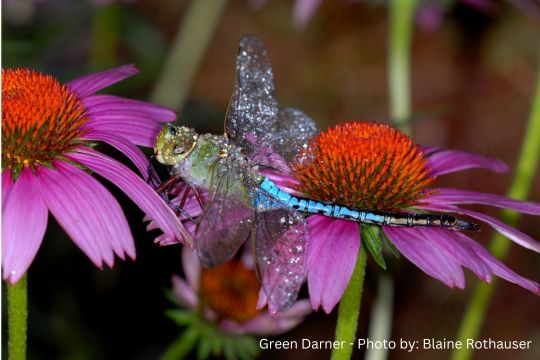Research by naturalist, Blaine Rothauser
Adapted by Val Thorpe, GSWA Director of Communications & Membership
Come take in the sights and smells of our 73-acre Conservation Management Area (CMA) in September. The first thing you might notice is a strong, earthy scent. This is caused by the breakdown of leaves, sticks – basically anything that is rotting. (It smells better than it sounds.) In other words, its cellular components are being broken down by a massive number of microbes. This scent in the air is an indication that autumn is on its way.
With all the rain we are experiencing this month, we can expect to see a plethora of mushrooms throughout the CMA. Look for old logs to see the turkey tail mushroom, which resembles the tail feathers of wild turkey. A cool and rare mushroom find is called Chicken of the Woods, found in dead tree stumps and logs. It’s stalkless, tawny orange in color, and has a wavy cap with yellow pores underneath. Its unusual name comes from its chicken-like taste and texture, according to some who have sampled it. CAUTION! NEVER EAT A WILD MUSHROOM UNLESS IT HAS BEEN PROPERLY IDENTIFIED BY AN EXPERT!


Fox kit, Photo by Blaine Rothauser
Foxes and coyotes are also nearby. You may not get to see these shy critters, but they leave signs and tracks to make sure you know they were there. For example, they mark their territory by leaving scat (feces) along the CMA trails and bridges. Both foxes and coyotes will do this to mark their territory against one another to avoid unwelcome encounters.


Locust borer, Photo by Blaine Rothauser
The temperatures are still inviting for many insects and spiders who are still enjoying the nectar and pollen of the ironweed, boneset, and goldenrod. In September, you can spot tachinid flies and beetles. Look closely at the goldenrods to find locust borers which are yellow with black cross striping. You may even spot a swamp darner dragonfly.
One bird you are very likely to hear along the trails is the catbird, who makes cat-like mew calls to warn the other inhabitants of the CMA that you are there. Don’t worry, though, these woodland critters would rather scurry away than risk bumping into you.
Want to learn more about the CMA? Click HERE for maps, in-depth information, and a comprehensive month-by-month guide curated by expert naturalist Blaine Rothauser. Discover the CMA’s hidden treasures at 1 Tiger Lily Lane in Harding Twp. With 3.5 miles of boardwalk and mulched trails, you can enjoy all its natural wonders year-round.
Note: Sunday’s storms caused some damage to our boardwalks and trails. We need your help! Join us this Friday as we work to restore them. To volunteer, check out our upcoming events in this eNewsletter.
